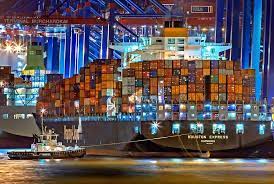Introduction to Heavy Freight Shipping:
Heavy freight shipping stands as the backbone of global trade, facilitating the movement of large and cumbersome goods across oceans and continents. From massive machinery and industrial equipment to raw materials and oversized cargo, heavy freight shipping plays a pivotal role in connecting economies and industries worldwide. In this exploration, we delve into the intricacies of heavy freight shipping, examining the challenges, technologies, and trends that define this critical component of the international supply chain.
Vessels of Power: Specialized Ships for Heavy Freight:
Heavy freight requires specialized vessels designed to withstand the weight and dimensions of the cargo they carry. Roll-on/roll-off (RoRo) ships, flat racks, and open-top containers are common solutions for transporting heavy and oversized goods. Furthermore, heavy lift vessels equipped with cranes capable of hoisting immense loads onto and off the ship contribute to the efficiency of heavy freight shipping. These vessels are engineered to ensure the safe and secure transport of goods that often exceed the size limitations of standard shipping containers.
Challenges in Heavy Freight Shipping:
While heavy freight shipping is indispensable for global trade, it comes with its set of challenges. The sheer size and weight of the cargo pose logistical and engineering challenges, requiring meticulous planning to ensure safe loading, transportation, and unloading. Additionally, navigating regulatory frameworks, obtaining permits, and adhering to environmental and safety standards demand a high level of coordination and compliance. Weather conditions, particularly in open seas, can further complicate heavy freight shipping, emphasizing the need for experienced crews and advanced navigation technologies to mitigate risks.
Technological Advancements: Transforming Heavy Freight Shipping:
The landscape of heavy freight shipping is evolving with technological advancements that enhance efficiency, safety, and sustainability. The implementation of Internet of Things (IoT) devices, real-time tracking systems, and blockchain technologies provides stakeholders with increased visibility into the entire shipping process. Automation and robotics are revolutionizing loading and unloading processes, reducing the reliance on manual labor and minimizing the risk of accidents. Furthermore, innovations in ship design, propulsion systems, and fuel efficiency are contributing to a more sustainable future for heavy freight shipping, aligning with global efforts to reduce the environmental impact of maritime transport.
The Future of Heavy Freight Shipping: Sustainable, Resilient, and Global:
As the global economy continues to grow, heavy freight shipping is expected to play an increasingly pivotal role. The future of heavy freight shipping lies in sustainability, with a focus on green technologies, alternative fuels, and eco-friendly practices. Resilience in the face of external challenges, such as geopolitical shifts and economic uncertainties, will be crucial for the industry’s success. Additionally, the ongoing digital transformation, with the integration of artificial intelligence and data analytics, promises to streamline operations and enhance the overall efficiency of heavy freight shipping. By embracing these advancements and addressing challenges proactively, the heavy freight shipping industry is poised to navigate the seas of commerce with resilience and sustainability.
In conclusion, heavy freight shipping is an indispensable component of the global trade ecosystem, connecting industries and economies by transporting oversized and weighty cargo across the world’s oceans. Despite its challenges, the industry continues to evolve through technological innovations, sustainability initiatives, and a commitment to efficiency. As we look to the future, heavy freight shipping is not merely a means of transporting goods but a dynamic force driving economic growth and shaping the global landscape of commerce.




